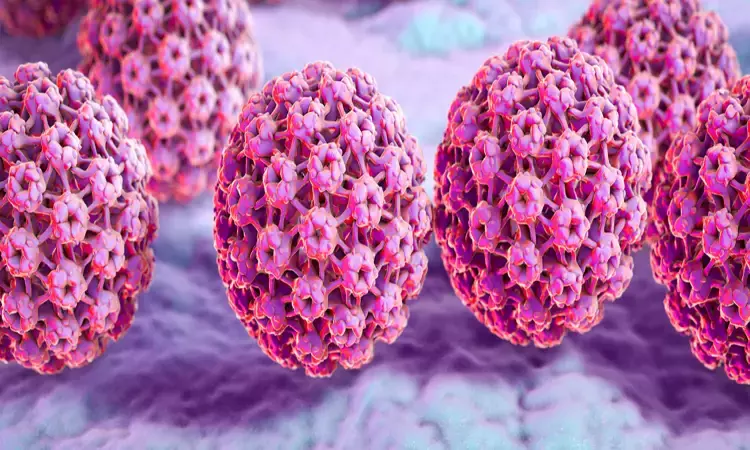- Home
- Medical news & Guidelines
- Anesthesiology
- Cardiology and CTVS
- Critical Care
- Dentistry
- Dermatology
- Diabetes and Endocrinology
- ENT
- Gastroenterology
- Medicine
- Nephrology
- Neurology
- Obstretics-Gynaecology
- Oncology
- Ophthalmology
- Orthopaedics
- Pediatrics-Neonatology
- Psychiatry
- Pulmonology
- Radiology
- Surgery
- Urology
- Laboratory Medicine
- Diet
- Nursing
- Paramedical
- Physiotherapy
- Health news
- Fact Check
- Bone Health Fact Check
- Brain Health Fact Check
- Cancer Related Fact Check
- Child Care Fact Check
- Dental and oral health fact check
- Diabetes and metabolic health fact check
- Diet and Nutrition Fact Check
- Eye and ENT Care Fact Check
- Fitness fact check
- Gut health fact check
- Heart health fact check
- Kidney health fact check
- Medical education fact check
- Men's health fact check
- Respiratory fact check
- Skin and hair care fact check
- Vaccine and Immunization fact check
- Women's health fact check
- AYUSH
- State News
- Andaman and Nicobar Islands
- Andhra Pradesh
- Arunachal Pradesh
- Assam
- Bihar
- Chandigarh
- Chattisgarh
- Dadra and Nagar Haveli
- Daman and Diu
- Delhi
- Goa
- Gujarat
- Haryana
- Himachal Pradesh
- Jammu & Kashmir
- Jharkhand
- Karnataka
- Kerala
- Ladakh
- Lakshadweep
- Madhya Pradesh
- Maharashtra
- Manipur
- Meghalaya
- Mizoram
- Nagaland
- Odisha
- Puducherry
- Punjab
- Rajasthan
- Sikkim
- Tamil Nadu
- Telangana
- Tripura
- Uttar Pradesh
- Uttrakhand
- West Bengal
- Medical Education
- Industry
Perinatal transmission of vaginal HPV from pregnant women to placenta or infants infrequent: JAMA

A new study by Pranamika Khayargoli and team showed that pregnant women were commonly found to have vaginal human papillomavirus (HPV). However findings of this study were published in the Journal of American Medical Association.
Human papillomavirus infection during pregnancy is uncommon, and the risk of transfer to babies is unknown. As a result, the purpose of this study was to determine the prevalence of HPV in pregnant women, the risk of HPV detection in the placenta and in infants at birth, and the likelihood that HPV found at delivery will remain in neonates.
The Human Papillomavirus Perinatal Transmission and Risk of HPV Persistence in Children (HERITAGE) research enrolled participants between November 8, 2010, and October 16, 2016. On June 15, 2017, participant follow-up visits were completed. Participants were recruited from three academic hospitals in Montreal, Québec, Canada, and comprised pregnant women of at least 18 years of age and at 14 weeks or earlier of gestation. On November 15, 2022, the laboratory and statistical analyses were finished. HPV DNA testing on vaginal and placental samples taken by the patient. Conjunctival, pharyngeal, oral, and vaginal samples were taken from children of HPV-positive mothers for HPV DNA testing.
Vaginal HPV DNA testing was performed on self-collected vaginal samples acquired from pregnant women recruited during their first trimester and in the third trimester for those who had HPV-positive tests in the first trimester. All subjects had HPV DNA testing done on placental samples (swabs and biopsies) taken after delivery. Conjunctival, oral, pharyngeal, and genital samples were taken from children of HPV-positive mothers at birth, 3 months, and 6 months of age.
The key findings of this study were:
1. This research comprised 1050 pregnant women in total.
2. At the time of recruitment, the prevalence of HPV in pregnant women was 40.3%.
3. Among the 422 HPV-positive women, 280 (66.4%) had at least one high-risk genotype, whereas 190 (45.0%) had several genotypes.
4. HPV was found in 10.7% of placentas overall, although only 3.9% of samples on the fetal side under the amniotic membrane (14 of 361) were positive.
5. Overall, 7.2% of newborns had HPV, with the conjunctiva being the most common location of infection, followed by the mouth, vaginal region, and throat.
6. Importantly, all HPV found at birth in children is eliminated by the age of six months.
In this cohort research, pregnant women had a high incidence of vaginal HPV (40%) but a low prevalence of HPV in the placenta (10%). The presence of HPV in 3.9% of biopsies taken under the membrane of the fetal side of the placenta implies that, albeit rare, genuine placental infection is feasible. The findings imply that HPV can be found in newborns (7% in our research). Because HPV was not discovered regularly over time, data up to 6 months imply that the link with newborn health is likely limited.
Reference:
Khayargoli, P., Niyibizi, J., Mayrand, M.-H., Audibert, F., Monnier, P., Brassard, P., Laporte, L., Lacaille, J., Zahreddine, M., Bédard, M.-J., Girard, I., Francoeur, D., Carceller, A. M., … Mayrand, M.-H. (2023). Human Papillomavirus Transmission and Persistence in Pregnant Women and Neonates. In JAMA Pediatrics. American Medical Association (AMA). https://doi.org/10.1001/jamapediatrics.2023.1283
Neuroscience Masters graduate
Jacinthlyn Sylvia, a Neuroscience Master's graduate from Chennai has worked extensively in deciphering the neurobiology of cognition and motor control in aging. She also has spread-out exposure to Neurosurgery from her Bachelor’s. She is currently involved in active Neuro-Oncology research. She is an upcoming neuroscientist with a fiery passion for writing. Her news cover at Medical Dialogues feature recent discoveries and updates from the healthcare and biomedical research fields. She can be reached at editorial@medicaldialogues.in
Dr Kamal Kant Kohli-MBBS, DTCD- a chest specialist with more than 30 years of practice and a flair for writing clinical articles, Dr Kamal Kant Kohli joined Medical Dialogues as a Chief Editor of Medical News. Besides writing articles, as an editor, he proofreads and verifies all the medical content published on Medical Dialogues including those coming from journals, studies,medical conferences,guidelines etc. Email: drkohli@medicaldialogues.in. Contact no. 011-43720751


